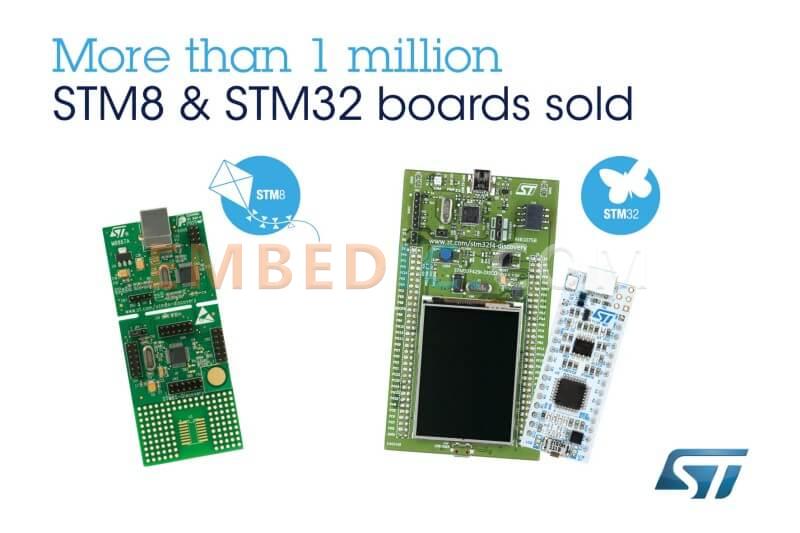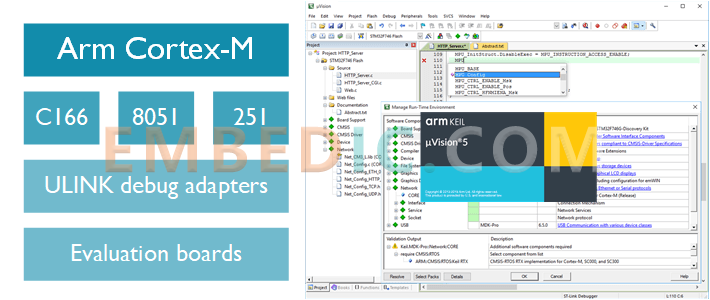The STM8 and STM32 are two important families of microcontrollers produced by STMicroelectronics. Both families are widely used in a variety of embedded systems and applications and are popular among developers due to their high performance, reliability and ease of use. This article will explore the basic features of the STM8 and STM32, application scenarios, and how to choose the right family for you.

The STM8 and STM32 are both families of microcontrollers manufactured by STMicroelectronics.
The STM8 family is a family of microcontrollers based on an 8-bit processor architecture that can be used in a variety of applications, including industrial automation, home appliances, security and surveillance.
The STM32 family, on the other hand, is a family of microcontrollers based on a 32-bit processor architecture with higher computing power and richer peripheral capabilities for more complex and advanced applications, such as smartphones, automotive electronics, medical devices, aerospace, etc. Here is a STM32 mcu example: STM32F412RET6.
Thus, STM32 is more advanced than STM8 and better suited for applications that require higher performance and more features, but is correspondingly more expensive.
STM8 and STM32 are both microcontroller families manufactured by STMicroelectronics with different features and application scenarios. The following are some of the main differences between STM8 and STM32:
Architecture: STM8 uses the 8-bit STM8 core, while STM32 uses the 32-bit ARM Cortex-M core, so STM32 has more processing power and can handle more complex applications.
Memory: STM32 has a larger memory capacity, including flash, RAM and EEPROM, to support more complex applications and more data storage.
Peripherals: STM32 has richer peripherals, including timer, UART, SPI, I2C, USB, CAN, SDIO, etc., which can meet the needs of different application scenarios; while STM8 has simpler peripherals, mainly including GPIO, timer, UART, SPI, etc.
Power management: STM32 has more advanced power management features, can support a variety of different power modes to achieve power optimization and long standby time characteristics, while the STM8 power management features are relatively weak.
Price: STM8 microcontroller is relatively low priced and suitable for some cost-sensitive application scenarios, while STM32 microcontroller is relatively high priced and suitable for application scenarios with higher requirements for performance and functionality.
In general, there are big differences between STM8 and STM32 application scenarios, and you need to choose the right microcontroller according to the specific needs and project characteristics. If you need higher processing power, richer peripherals and advanced power management functions, you can choose STM32 microcontroller; if you have more sensitive application scenarios in terms of cost and complexity, you can consider using STM8 microcontroller.
The STM8 microcontroller can also be programmed with Keil, but requires the installation of both Keil C51 and Keil CxSTM8. Keil C51 is for the 8051 microcontroller family, while Keil CxSTM8 is specifically designed for the STM8 family of microcontrollers. Therefore, when using Keil for STM8 microcontroller programming, you need to install both software and select the correct compiler and device model.

Note that the Keil CxSTM8 software only supports compilation with the official STMicroelectronics STVD compiler, not with Keil's own compiler. In addition, Keil CxSTM8 is relatively complex to use and requires a more in-depth understanding of the registers and peripherals of the STM8 microcontroller. Therefore, it may be simpler and more straightforward for beginners to use other programming software such as SDCC and IAR.
Yes, Keil MDK-ARM v5 can be used for STM32 microcontroller development. keil MDK-ARM is a development tool specifically for the ARM Cortex-M family of microcontrollers and includes a complete development environment with a compiler, debugger and a range of software components. keil MDK-ARM v5 supports a wide range of STM32 family of microcontrollers, including the common STM32F1, STM32F2, STM32F3, STM32F4 and STM32L series. In Keil MDK-ARM v5, STM32 microcontroller applications can be written in C or assembly language, and the programs can be debugged and tested using the Simulator or debugger provided by Keil.
Note that for different STM32 series microcontrollers, you need to select the corresponding Keil Device Support Package (DSP) to support the development. Also, Keil provides a number of software libraries and code examples for STM32 to facilitate rapid development by developers.
STM8 and STM32 are families of microcontrollers from STMicroelectronics with different features and performance, so they are suitable for different application scenarios. The following are their main application scenarios:
STM8 application scenarios:
STM32 application scenarios:
In short, both STM8 and STM32 have different advantages and application scenarios, and you need to choose the right product according to different application requirements.
In summary, STM8 and STM32 are two widely used microcontroller families, both of which have their unique features and application scenarios. It is important for developers to choose the right family for their applications.
Whether you choose the STM8 or STM32, they both offer access to a wide range of tools and resources to simplify and optimize the development process, thereby accelerating the time-to-market of your project. We hope this article will help you better understand the STM8 and STM32 and thus better select the right microcontroller family for your application.
Manufacturer: Texas Instruments
IC DSP FIX/FLOAT POINT 176HLQFP
Product Categories: DSP
Lifecycle:
RoHS:
Manufacturer: Microchip
IC MCU 16BIT 16KB FLASH 28SDIP
Product Categories: 16bit MCU
Lifecycle:
RoHS:
Manufacturer: Texas Instruments
IC DSP FIX/FLOAT POINT 176HLQFP
Product Categories: DSP
Lifecycle:
RoHS:
Manufacturer: Microchip
IC MCU 8BIT 1.75KB FLASH 18DIP
Product Categories: 8bit MCU
Lifecycle:
RoHS:
Looking forward to your comment
Comment